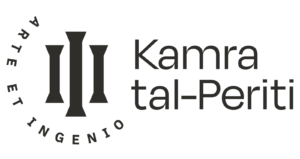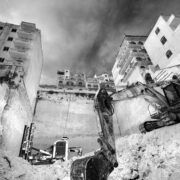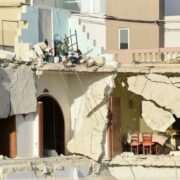PR 14/19 | Avoidance of damage to third party property – new regulations
On the 13th June 2019, Government halted all demolition and excavation works in the country as an emergency action in view of the recent spate of structural collapses which occurred adjacent to construction sites, a measure which the Council of the Kamra tal-Periti understood to be necessary due to the potential risks to public safety resulting from the lack of adequate regulation and of which it immediately informed periti. That day the Prime Minister announced that new regulations would be published regarding excavation and demolition works to address a number of issues. Draft amendments to the Avoidance of Damage to Third Party Property Regulations were published on Monday 17th June 2019, and concern the following main aspects:
- The definition of site responsibilities, in particular those of the site manager;
- Increase in insurance cover and requirement for its renewal;
- The process for the submission of the method statement and condition report, including regarding the need and frequency of geological and geotechnical surveys;
- Exemptions; and
- Penalties.
The Council of the Kamra tal-Periti together with its team of technical experts has reviewed the proposed draft, and has this morning issued a preliminary position to all periti. This will be discussed and approved at an Extraordinary General Meeting to be held on Friday 21st June 2019. Periti have been given until Thursday at noon to submit their comments in writing to the Council, following which a final draft will be circulated.
The following is an Executive Summary of the Kamra’s initial reactions:
- The rush to implement these piecemeal changes to the regulatory regime that governs the building industry is ill-thought. Our regulations and legislative instruments need a complete overhaul, as the Kamra has repeatedly stated since 2007. Attempting to amend the current regulations without having considered their impact on other pieces of legislation as well as on current practices and capacity of the industry is a recipe for further confusion and lack of clarity, rather than addressing the issues of safety which these changes purport to address. Even if the purported aim is to address the dangerous process of demolitions and excavations adjacent to existing properties, the Legal Notice proposes to address all other construction activities, but, at the same time, fails to address the other dangerous process of loading party walls, and their foundations, designed to carry two or three storeys, by many more floors.
- The amendments claim to clarify the roles of the figures engaged on a site. However, there are glaring incongruencies with roles defined in other legislation, and rather than clarifying, the proposals introduce new roles without defining appropriate competences, while ignoring the existence of figures already defined in other legislation, such as licenced masons. It also ignores the blatant lacuna regarding the legal obligation for registration of contractors, who are liable, as per Civil Law, jointly with the perit, for the structural integrity of buildings.
- The proposed processes for the submission of method statements, geotechnical investigation reports and geotechnical design reports are cumbersome and more intent on establishing who does them, who submits them, when and to whom, than on establishing the criteria for their preparation. The Kamra is of the opinion that this is a result of the lack of research to understand how such instruments are used internationally, and trying to adapt them to the local situation, with no regard for scale or complexity of projects.
- The proposed draft seems to imply that the measures proposed therein are to apply retroactively to ongoing projects. This will have implications on the capacity of the industry to respond in a meaningful manner.
In our view, the proposed Legal Notice in its current form is not acceptable. The full version of the Kamra’s analysis on the draft will be published at the end of the consultation process following the EGM.








